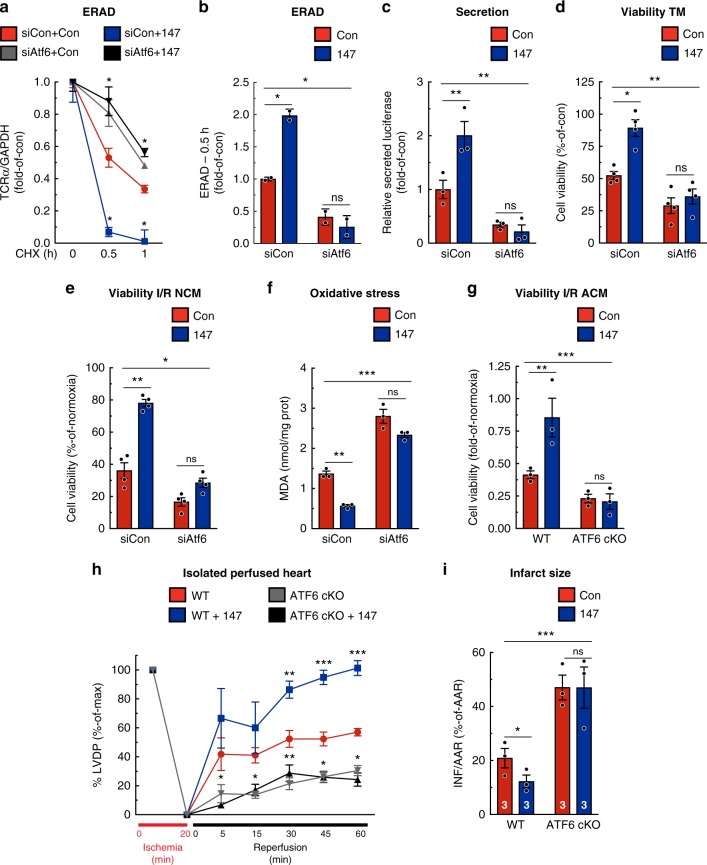Fig. 4.
147 improves proteostasis and decreases oxidative stress in an ATF6-dependent manner. a, b NRVM were infected with AdV-HA-T cell antigen receptor α-chain (TCRα; an ER-transmembrane protein that is chronically misfolded and degraded by ERAD), treated with siCon or siAtf6 and either control or 147 for 24 h prior to cyclohexamide for 0, 0.5, or 1 h. Densitometry of the HA-TCRα immunoblots at the respective times (a) and ERAD at the 0.5-h time point (b) are shown (n = 2). c Secretory proteostasis assayed in NRVMs when transfected with Gaussia luciferase and treated with siCon or siAtf6, and either control or 147 for 24 hours. Medium was collected and luciferase activity was measured (n = 3). d NRVMs were transfected with siCon or siAtf6, and then treated with or without TM, control or 147 for 24 hours, after which viability was determined (n = 4). e, f NRVMs were transfected with siCon or siAtf6, treated with or without control or 147 for 24 hours, and then I/R, after which viability (e) and malondialdehyde (MDA) (f) were measured. g Viability of I/R-treated cultured adult cardiomyocytes isolated from WT (n = 3) or ATF6 cKO (n = 3) mice 24 hours post treatment with control or 147. h, i LVDP (h) and relative infarct sizes (i) of WT or ATF6 cKO mice treated 24 hours with control or 147 and then ex vivo I/R. Data are represented as mean ± s.e.m. Two-group comparisons were performed using Student’s two-tailed t test, and all multiple group comparisons were performed using a one-way ANOVA with a Newman–Keuls post hoc analysis. **P ≤ 0.01 and ***P ≤ 0.001; ns not significant

